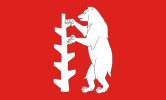Church in Polesworth, England
| Polesworth Abbey | |
|---|---|
| Abbey Church of St Editha, Polesworth | |
 Polesworth Abbey Polesworth Abbey | |
| 52°37′7.77″N 1°36′44.02″W / 52.6188250°N 1.6122278°W / 52.6188250; -1.6122278 | |
| OS grid reference | SK 26332 02433 |
| Location | Polesworth |
| Country | England |
| Denomination | Church of England |
| Website | polesworthabbey.co.uk |
| History | |
| Dedication | St Editha |
| Architecture | |
| Heritage designation | Grade II* listed |
| Administration | |
| Diocese | Anglican Diocese of Birmingham |
| Archdeaconry | Aston |
| Deanery | Polesworth |
| Parish | Polesworth |
Polesworth Abbey was a Benedictine nunnery in Polesworth, North Warwickshire, England.
In 925, the sister of Ethelstan, and repudiated wife of Sihtric, king of Northumbria, came to live at the Abbey. In 1066, Sir Robert Marmion expelled the nuns from Polesworth, but after seeing a vision of St. Edith, he allowed them to return; in 1242, King Henry III granted the abbey a weekly market, as well as an annual fair for St Margaret.
Abbey
It was founded in the 9th century by St. Modwena and King Egbert. The first abbess was Edgytha (daughter of King Egbert, now St. Editha).
The site of the Abbey is a Scheduled Ancient Monument, although apart from the church and the gatehouse and the restored ruins of the cloister very little remains visible. The 12th-century Abbey church, now the parish church of St Editha, is a Grade II* listed building. The 14th-century gatehouse is both a Grade II* listed building and a Scheduled Ancient Monument. It has recently been restored and renovated to provide apartments available for rent.
Parish church
Following the Dissolution of the Monasteries in 1536, the Abbey was granted by Henry VIII to Francis Goodere of St Albans, Hertfordshire in 1544; Goodere dismantled many of the Abbey buildings to provide stone for a new manor house (Polesworth Hall) which he built on the site. Later Sir Henry Goodere was a patron of the arts and leader of the Polesworth Group of poets, which included his protégé Michael Drayton.
Polesworth Hall was demolished before 1868 and the Vicarage was built on the site. The abbey now functions as the Church of England parish church of Polesworth.
Organ
The church contains a three manual pipe organ by Taylor of Leicester. It was originally installed in 1912 in St Michael & All Angels' Church, Leicester. A specification of the organ can be found on the National Pipe Organ Register.
See also
References
- Visit North Warwickshire website, Polesworth
- ^ British History website, Houses of Benedictine Nuns; Chapter 4, the Abbey of Polesworth
- Historic England. "Church (Grade II*) (1252564)". National Heritage List for England. Retrieved 21 April 2009.
- Historic England. "Abbey gatehouse (Grade II*) (1262202)". National Heritage List for England. Retrieved 21 April 2009.
- Polesworth Abbey website, The GateHouse
- Our Warwickshire website, Site of Manor House at Polesworth Vicarage
- Visit Polesworth website, Polesworth Abbey
- "NPOR [R00640]". National Pipe Organ Register. British Institute of Organ Studies. Retrieved 9 January 2015.
Other sources
- A History of the County of Warwickshire, Volume 4 (1947) from British History online
- Polesworth Abbey by Warwickshire Timetrail.
External links
- Polesworth Abbey
- Polesworth Abbey Choir
- Polesworth Abbey Arts
- British History website, list of Abbesses from opening until 1539
| Monasteries in Warwickshire | ||
|---|---|---|
| Augustinian |
|  |
| Benedictine |
| |
| Cistercian |
| |
| Dominican |
| |
| Knights Hospitaller |
| |
| Knights Templar |
| |
| Trinitarian |
| |
| Independent Houses | ||
This article about a Warwickshire building or structure is a stub. You can help Misplaced Pages by expanding it. |
- Christian monasteries established in the 9th century
- Anglo-Saxon monastic houses
- Monasteries in Warwickshire
- Benedictine nunneries in England
- Grade II* listed buildings in Warwickshire
- Scheduled monuments in Warwickshire
- 9th-century establishments in England
- 1530s disestablishments in England
- Church of England church buildings in Warwickshire
- Polesworth
- Warwickshire building and structure stubs